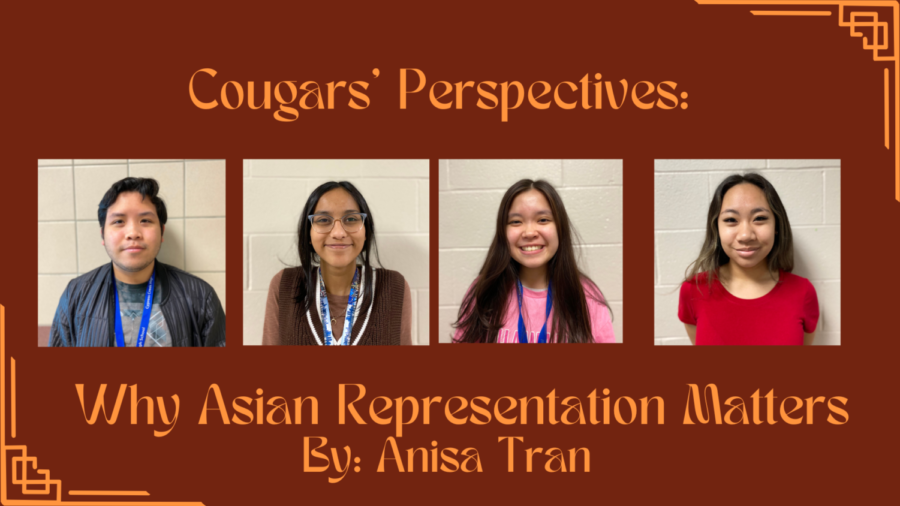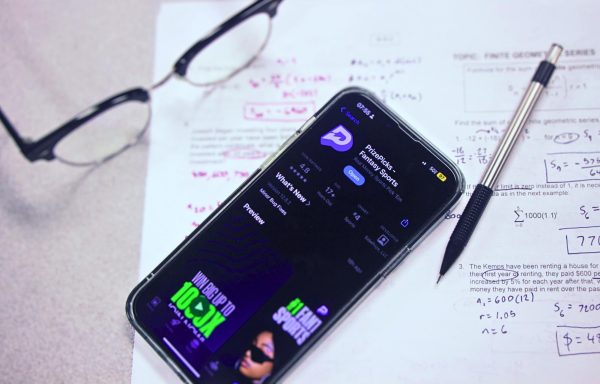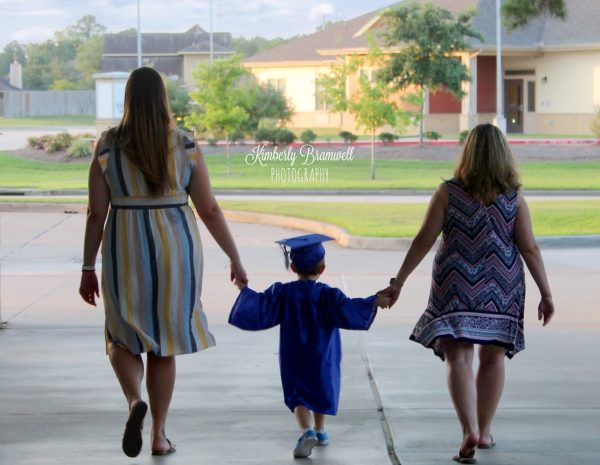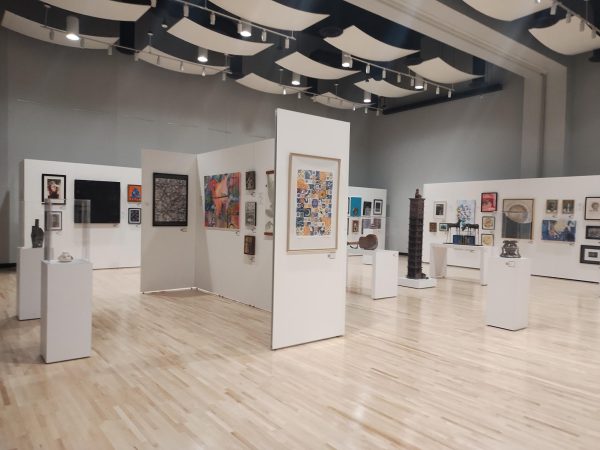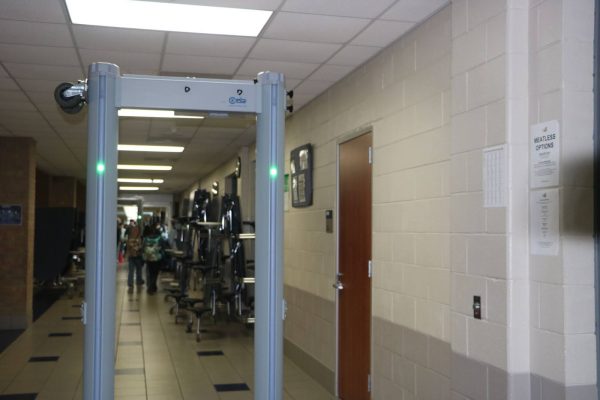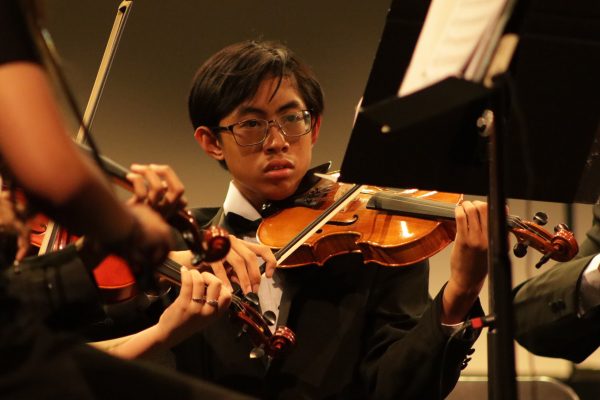Cougars’ Perspectives: Why Asian representation matters
From left to right: Nathan Dollosa, Manal (Verne) Khan, Shirley Nguyen, and Isabelle Outhay. Photos and Graphic by Anisa Tran.
In 2012, Korean pop began to rise to fame in the United States.
In 2019, the movie ‘Parasite’ directed by Korean film director, Bong Joon-ho, won multiple awards, including the Academy Award for Best Picture.
In 2021, the Netflix original K-Drama, Squid Games, went viral and became one of Netflix’s most popular TV shows.
These pop culture moments have contributed to the growing Asian representation in American mainstream media. However, Asian representation hasn’t always been as prevalent as it is today.
“In my younger years out of all the mainstream educational shows I would watch, only two would have a single Asian character,” junior Manal “Verne” Khan said. “As I grew up watching shows for six to twelve-year-olds, I’d say only one had an Asian character that consistently was shown in the show and plot-relevant. Some examples I can recall include ‘Ni Hao, Kai-Lan’, ‘Avatar: The Last Airbender’, ‘Jessie’, and ‘Andi Mack.’”
Khan said that more often now, Asian actors are cast as main characters, making them more relevant in the media.
“Recently in many TV series, an Asian character would have a leading role more often than not,” Khan said. “Their development also did not completely surround their culture; there was much more depth.”
Though this is an improvement, Khan also critiqued the representation of Middle Eastern Asians in the media.
“However, Middle Eastern Asians were never seen in [the] previous shows [mentioned],” Khan said. “Only now I see Hijabi background characters in children’s shows. While it’s disappointing, I’m glad to see that huge media industries are starting to consider Middle Eastern people as human.”
For junior Shirley Nguyen, her Asian representation did not come from TV shows and typical forms of mainstream media but from popular creators on the internet.
“The only Asian ‘figures’ I grew up around were characters such as Mulan and Youtubers such as LaurDIY,” Nguyen said.
This isn’t surprising, considering the statistics.
In one study, the University of Southern California’s Annenberg Inclusion Initiative viewed 1,300 popular movies filmed 2007 to 2019 and found Asians and Pacific Islanders made up less than 6 percent of speaking roles in films.
Since then, though, diversity and inclusion conversations have led to an increase in Asian representation in mainstream media.
Junior Isabelle Outhay says she has seen an increase in representation.
“I absolutely think there’s more Asian representation in the media now. I saw some as a child, but I think the representation I see now is more distinguished,” Outhay said.
Junior Chenyue Jiang has also noticed an increase in representation, but she feels like the representation she’ ha seen is more superficial.
“There definitely is a lot more Asian representation now, but I feel like a lot of it is forced and not very genuine. I feel like a lot of representation is so the company doesn’t get ‘canceled,’” Jiang said.
Though the numbers seem small, there has been an increase in Asian representation in the media. A study by Nielsen found that Asian representation across broadcast, cable and streaming services increased to 4.6 percent in 2021, which is a 1.1 percent increase from 2020.
Students believe that increased Asian representation in mainstream media will leave a positive impact on future generations. Khan says it will help Asian Americans be more proud of their roots.
“The presence of Asian Americans in the media will definitely bring a sense of pride into a person’s heritage,” Khan said. “When I was younger, seeing such a lack of people similar to me made me fantasize [or] romanticize being something I could never be.”
Nguyen says that through representation, Asian Americans will find their voice and represent their culture in the media.
“Asian representation will positively impact future Asian Americans by giving them a voice on the big screen and by showcasing the beauty behind Asian culture,” Nguyen said. “It’s important for future Asian Americans to see this representation and feel heard by the opportunities and appreciation for their culture.”
Though the growth of Asian representation in the media has been well-received by many, it is important to note that not all representation has been entirely positive. There are certain negative aspects when it comes to Asian representation in the media.
“There’s a lot of heavy sexualization,” Outhay said. “It has almost become desensitized and ‘normal.’”
In a study conducted by the Geena Davis Institute on Gender in Media, the Coalition of Asian Pacifics in Entertainment and Gold House, 17 percent of Asian female characters were subjected to verbal objectification. It was also found that 13 percent were visually objectified in the top ten highest-grossing domestic films from 2010 to 2019. In the same study, around 35.2 percent of Asian characters embodied at least one common stereotype such as the martial artist, the exotic woman, and the model minority.
“Stereotypes regarding Asians won’t be going away anytime soon,” Khan said. “All cultures have their stereotypes and are fetishized one way or another. While this is very hard to work past, we must continue to ask for the best in representation.”
Negative representation of Asians in the media can have ramifications. Junior Nathan Dollosa says it can even lead to violence.
“Negative Asian representation can definitely have its consequences,” Dollosa said. “For example, look at the violence Asians faced two years ago [during the pandemic].”
Outhay agrees with Dollosa.
“Negative Asian representation would definitely bring offense to the Asian community,” Outhay said. “It also shows viewers that the negativity [towards Asians] is okay, and it might lead those people to cause harm to Asians in their own life.”
However, Nguyen said positive media representation can give Asian Americans a sense of comfort and courage.
“Asian representation can positively affect us by giving us a safe space in this world through media and allowing future Asian Americans a place to dream,” Nguyen said.
Dollosa says it allows for the issues the Asian community faces to be recognized.
“The importance of Asian representation is that the issues that we face will be put into light, similar to how the issues other minority groups face are represented in the media,” Dollosa said. “This will ensure that our issues will be seen just as important.”
Asian representation in mainstream media isn’t the only type of representation that matters. Biology teacher Stephanie Nguyen spoke on the importance of Asian representation in politics.
“Having Asian representation in politics will allow those of an ethnic minority to have a say in the community,” Ms. Nguyen said. “Representation for those that live in the area will bring a more accurate visual of any issues and needs to best improve our community.”
According to the 2020 Census, Asians make up 6.2 percent of the nation’s population. That figure is 6.8 percent in the city of Houston.
“It is important that we have Asian politicians represent and voice the concerns and needs of the Asian population,” educational diagnostician Lynn Ngo said.
One of the issues Asian Americans face is racism.
“Asian Americans can play a big role on a variety of issues, just like any other vote,” Ms. Nguyen said. “We can bring awareness to the racism that many minorities and immigrants can face.”
According to a report by Stop AAPI Hate, more than 11,400 hate incidents against Asian Americans were reported across the U.S. between 2020 and 2022. A separate study by the Center for the Study of Hate and Extremism found that hate crimes against Asian Americans rose 339 percent nationally between 2020 and 2021.
Not only are stereotypes an issue in mainstream media; they’re also an issue when it comes to political representation of Asians.
“Although Asian Americans are referred to as the ‘model minorities,’ it does not take away from the fact that there are issues that we face,” Ngo said. “The idea of the ‘model minority’ gives the assumption that all Asians are able to access all resources equally.”
Ngo says this stereotype plays into the identity of Asian Americans and political participation.
“Our identity plays a big role in terms of our participation in politics,” Ngo said. “Asians have been labeled the ‘model minority’ due to our passive nature. Because of that, Asians are seen to go along with anything suggested or provided. With that being said, decisions that could be negative for the Asian population could be made because we are ‘easy going.’”
Ms. Nguyen says that Asian American voices being heard in politics can help with representation and impact other people as well.
“Having Asian American voices in American politics heard is just as important as having the voices of any other American being heard.” Ms. Nguyen said. “We are all here to build a better nation and community. Clear representation of that can help in this vision.”
One of the most effective ways to have your voice heard politically is by voting. Ngo said voting gives Asian Americans a chance to be heard.
“Voting as an Asian American is one of the many steps people can take to ensure that their voices are heard. Nothing can be done if nobody votes for the cause that you care about.” Ms. Nguyen said. “If everyone does their own small part in voting, you might notice a ripple effect down the line.”
Asian Americans using their voice won’t only benefit them; Ngo says that it will also give other minority groups inspiration to stand up for what they believe in.
“Taking a stand on important topics gives other minority groups the hope and courage to take a stand on their own beliefs.” Ngo said.
Ms. Nguyen says it will also help build solidarity among minority groups, and communicate to the world that hate will not be accepted– no matter who it’s directed to.
“Speaking out to help and support other minority groups is essential to building a strong community.” Ms. Nguyen said. “When we support one another, a clear message is sent where discrimination or hatred by any means is not tolerated.”

